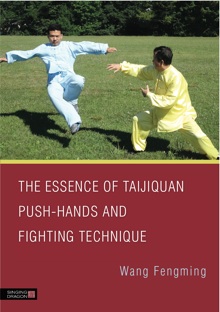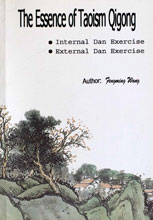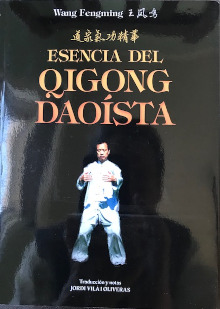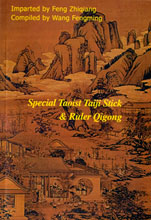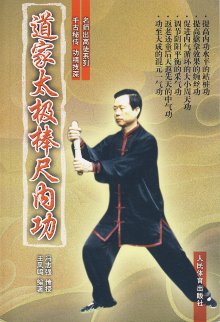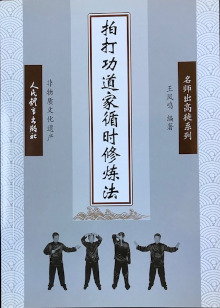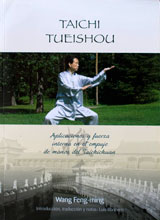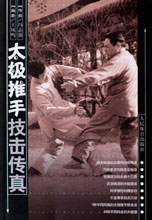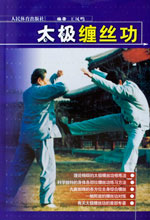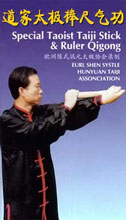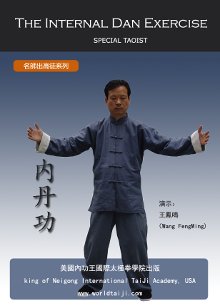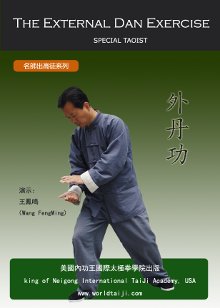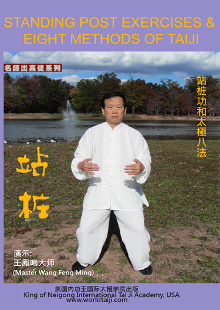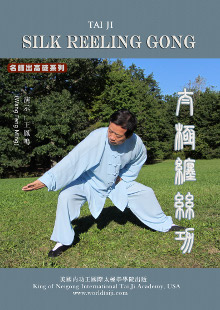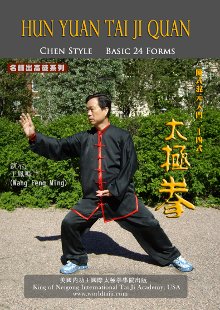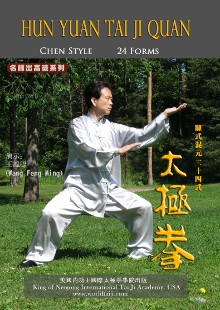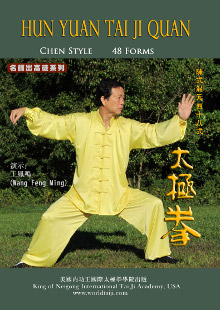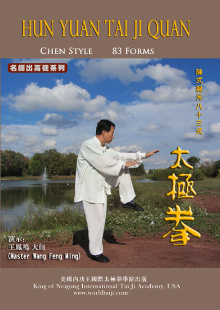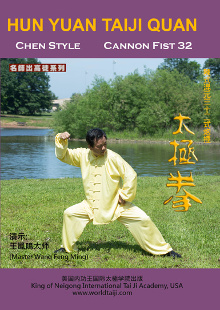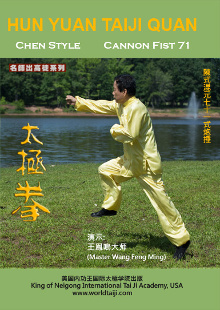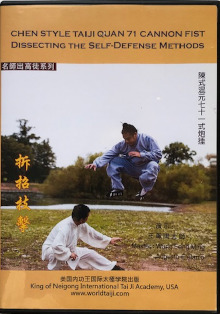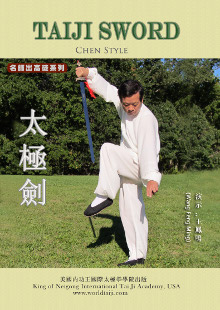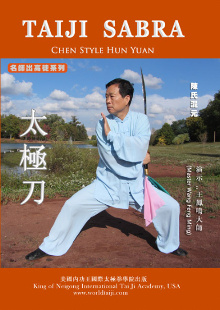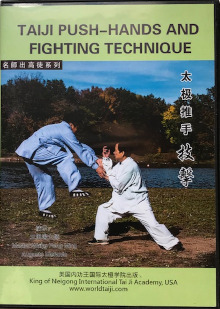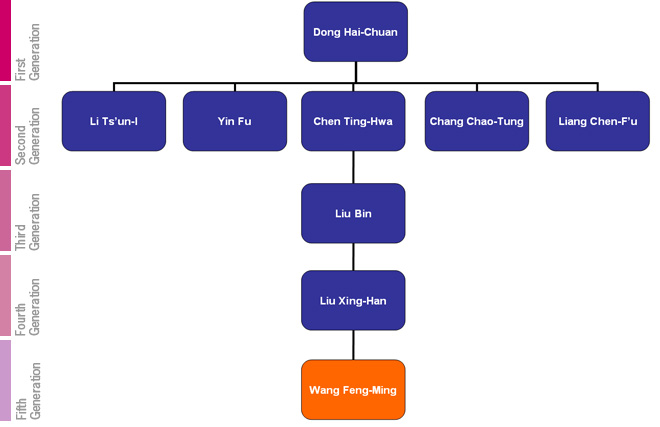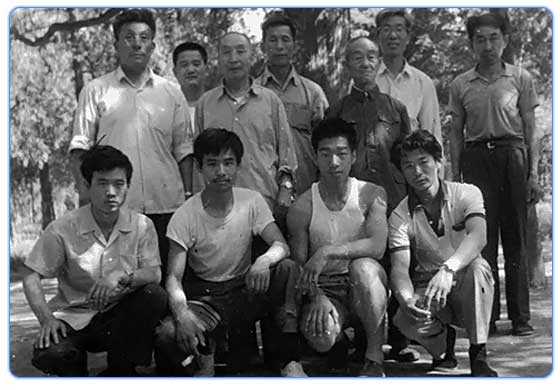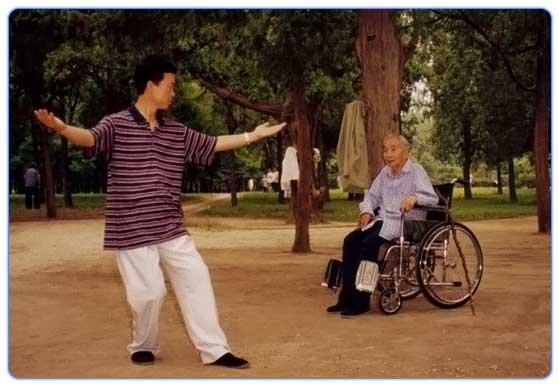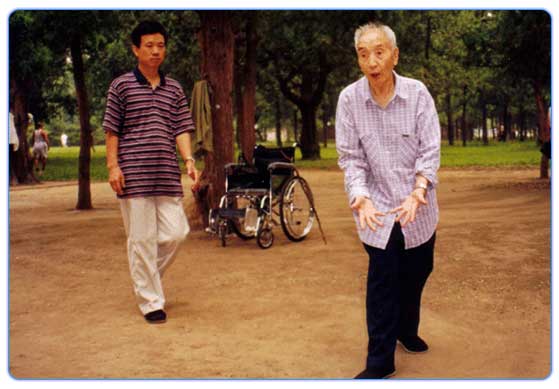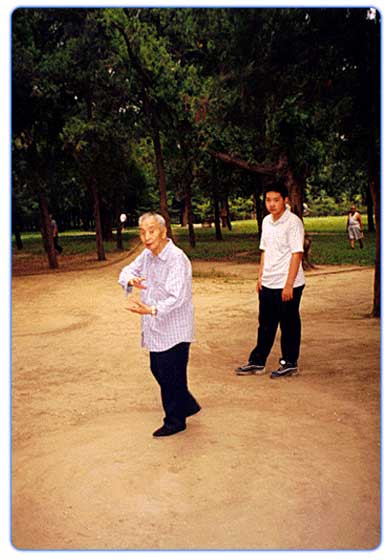Master Wang Feng-Ming is an internationally reputed martial arts master specializing in Taiji, Qigong, and Baguazhang, and also a renowned writer in martial arts. He is the author of several books (in Chinese and a few in English) and has published more than 100 articles in martial arts magazines around the world. More than 20 martial arts organizations in various parts of the world have appointed Master Wang as honorary institute director, professor, or consultant.
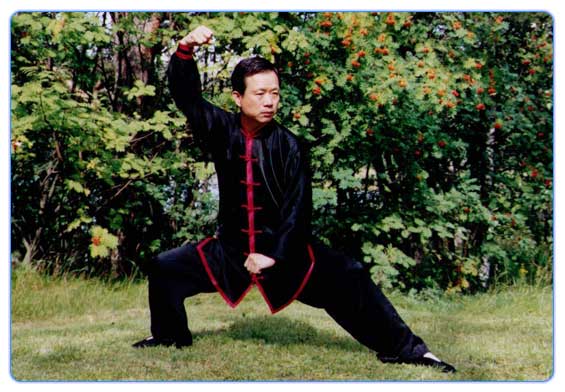
Master Wang Feng-Ming
From 1988 to 1993, Master Wang also organized for the Beijing Public Safety Department (the Beijing Police Department)'s Chung Wan District a training workshop on Qin Na Self Defense for the Beijing police cadres.
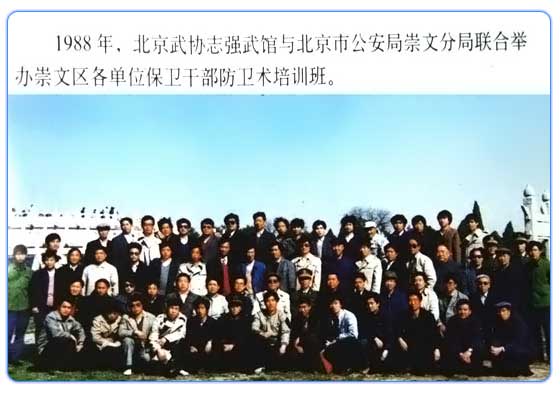
1988 Self Defense Training Course for the police cadres in the Chung Wan District of the Beijing Police Department
Master Wang is a disciple of Grand Master Feng Zhiqiang, the 18th generation successor to Chen Style Taijiquan. He is also a disciple of Liu Xinghan, the 4th generation successor to Baquazhang. Master Wang started martial arts training and practice at age eight in China. He has studied and taught martial arts for several decades, and won many awards in China and international martial arts and qigong competition. He is reputed as the "King of Neigong" and the authenticated Master of Taiji and Qigong. He is well respected and followed by students all over the world.
Starting in 1994 and for more than 10 years, Master Wang was invited to teach martial arts at the Department of Physical Education at the University of Helsinki in Helsinki, Finland. While in Europe, Master Wang established the very successful "The European Association of Chen Style Hun Yuan Taiji," which has organized an international workshop in a European country every year for the last 10 years. The last few workshops took place in Stockholm (Sweden), Amsterdam (Netherlands), Helsinki (Finland), and Paris (France). The 11th International Chen Style Hun Yuan Taiji & Qigong Workshop will be held in Helsinki, Finland during August 3-9, 2009.
Master Wang is the founder of "The World Chen Style Hun Yuan Taiji Association".
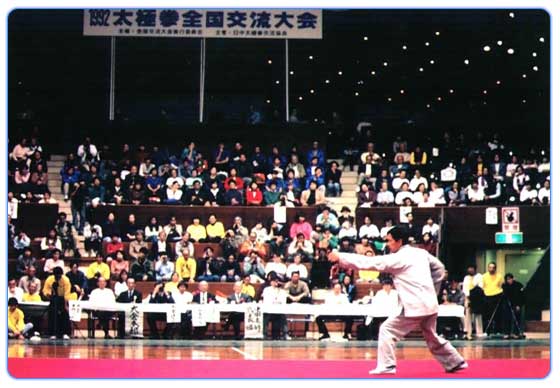
Master Wang performing at the 1992 Sino-Japan Taiji National Exchange Conference in Tokyo
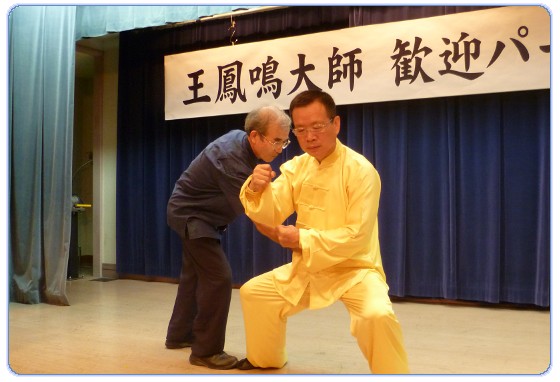
Japanese student feeling Master Wang Fengming's dantian vibration at a welcoming ceremony.
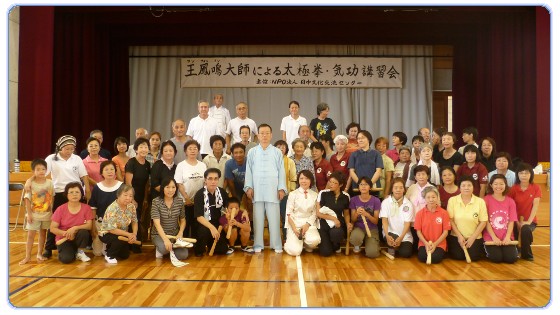
Students and Master Wang Fengming in a group photo.
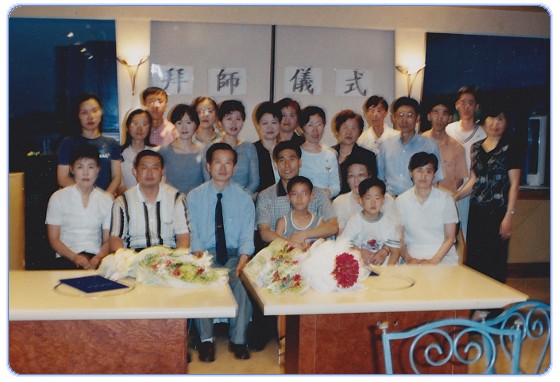
A discipleship ceremony in South Korea.
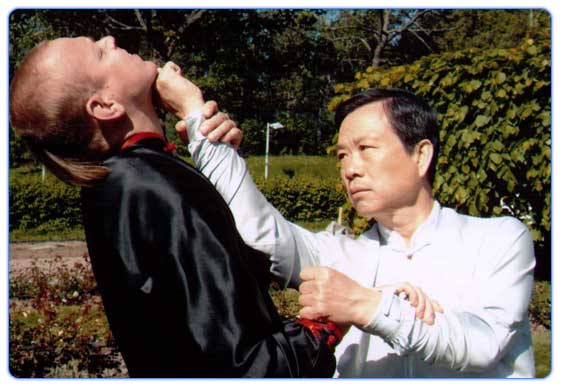
Master Wang demonstrating fighting technique at a European conference
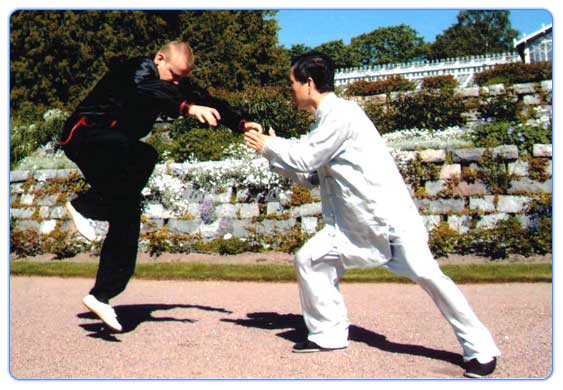
Master Wang demonstrating Push Hands technique at a European conference
The 12 International chen style Hun yuan taiji & Qigong Exchange will be hold on Aug 21-25, 2010 in New Jersey, U.S.A
Taoist Qi Gong Formal Lineage
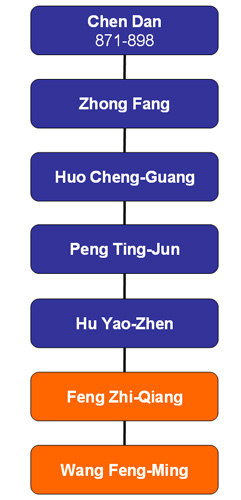
Qi Gong Teaching Program
- Special Taoist Taiji stick and ruler Qigong
- The Essence of taoist Qigong-Internal Dan Exercise
- The Essence of taoist Qigong-External Dan Exrcise
- Time-Oriented practice methods of Daoist Qi gong-24 Qi sitting Qigong
- Patting (Pai Da) Qi gong
- In six-character formula method of Oi gong
Practicing method of Taoist Qigong-the Internal Dan Exercise
Section 1 Preparatory Exercise
- Start posture of infinity
- The exercise of lowering Qi and washing organs
Section 2 The Exercise of Collecting Qi
- The exercise of collecting natural air
- The exercise of taking up heaven Yang Qi
- The exercise of absorbing ground Yin Qi
Section 3 Practicing Method of the Lower Dantian
- The exercise of opening & closing the lower Dantian
- The exercise of taking back & discharging the lower Dantian
- The exercise of strengthening Yang and recuperating the sexual capability
Section 4 Practicing Method of the Middle Dantian
- The exercise of opening & closing the middle Dantian
- The exercise of taking back & discharging the middle Dantian
- The exercise of holding the moon
Section 5 Practicing Method of the Upper Dantian
- The exercise of opening and closing the upper Dantian
- The exercise of taking back & discharging the upper Dantian
- The Exercise of integrating the three Dan into one entity
Section 6 Regulating the Balance of Yin & Yang
- The exercise of inflating the two poles with your Qi
- The exercise of coordinating water and fire
- The exercise of floating the Duckweed on the water
Section 7. Casting Back the Origin of Dan Qi
- The exercise about ancient tree saluting for the coming of spring ( I )
- The exercise about ancient tree saluting for the coming of spring ( II )
- The exercise of filling Qi into the Zhong Gong
- The exercise of integrating the five centers into one entity
Section 8 The Exercise of Powerfulness
- The exercise of opening and closing the exercise of powerfulness
- The exercise about smart dragon playing in water
- The exercise of shooting the fist in a spiral way
Section 9 Completing the Exercise
- Complete the exercise with single maneuver
- Five kinds of Qi returning to Dantian
Section 10 Returning to the Origin
- The exercise of returning to the origin along your footprint
- The exercise about golden needle pointing to the south
Practicing Method of Taoism Qi Gong --- The External Dan Exercise
Section 1 Collecting Qi and Cultivating Yuan (the primordial Qi)
- The exercise of golden needle pointing at the south
- The stake-standing maneuver of the heaven and the ground
Section 2 Shaping the External Dan Round
- The exercise of performing the exercise as you wish
- The exercise about pearl in the hand
- The exercise about two dragons playing with a pearl
- The exercise of attempting to get out the moon in the seabed
Section 3 The Internal and External Hun Yuan
- The exercise about the lion and the embroidered ball
- The exercise of integrating the heaven, the ground, and human body
- The exercise of taking back Qi and return it to the Dantian
Section 4 Connecting your Attention to Taoism
- The exercise of opening the heaven eye (non-vision sight)
- The exercise of making various hand postures (the exercise of Jieshouyin)
Time-Oriented Practice Methods of Daoism Qi Gong --- 24 Qi Sitting Qi Gong
Time-Oriented Practice Methods of Daoism Qigong was developed by the famous Daoism Qi Gong Master Chen Dan (Chen Xiyi, 871-989), who lived for 118 years. During his old ages, according to his experience of practicing Daoism Qi Gong over years, he created this Qi Gong practice method on the basis of natural laws and traditional Chinese medical theories, such as heavenly stems, earthly branches, 12 months in a year, 24 solar terms, the laws of interconsuming and supporting relationship of yin and yang in different periods of a day in combination with the change of internal Qi in the meridians and reservoirs by selecting 24 kinds of movements. It already has a history of over one thousand years.
Time-Oriented Qi Gong Practice Methods can achieve better effect because our body is like a biological clock, the change of life rhymn and the periodical change in physiology and pathology keeping the same pace with the periodical change of nature. Besides, the opening and closing of the meridians and the flow of qi also change with time. With biological clock of body and simultaneous practice of heaven and earth as a leading theory, Time-Oriented Qi Gong Practice Methods are used to collect the energy from heaven, earth and nature to achieve the effect of regulating Qi in the body. This practice can regulate yin and yang of the body to meet the change of yin and yang in nature aiming at maintaining a harmonious relation between the heaven, earth and human.

Patting (Pai Da) QingGong
By: Wang Feng-Ming
The Methods of Making Patting Pad:
- Make a pad with cloth 70-80 cm in length, and 4-5 in diameter.
- Stuffing in the patting pad includes rice and 14 kinds of herbal medicines.
- Stuffings in the pad should be changed every two years to keep effect.
- The medicine contents of the Pai Da bag are registered and patented, and they are not allowed to be described to public. If student needs it, they will have to order them from the teacher.
Precautions:
- The participant who is normal in condition can practise qigong, while the herbal ingredients for patting massage inherited from ancient times secretly should be made up by the instructor.
- The participant who in case suffers from any diseases should be diagnosed by a physician and necessary herbs may be added in line with the condition.
- The part of the body or the acupuncture point whether to be patted with mild strength or heavy strength or special technique should follow physician's advice.
- The part of the body with external trauma or muscular injury should not be patted until it is healed.
- The patting pad should be used individually. The one with skin diseases, blood disorders or infectious diseases are forbidden to use another person's pad.
Actions:
- The exercise of patting qigong can alleviate muscular tension, activate blood circulation and remove blood stasis, improve the local flow of qi and blood, remove the obstruction from the meridians and collaterals, promote qi and blood to reach the hand and foot, smooth the flow of qi in the twelve meridians to relieve cold sensation in the hand and foot, and regulate interior metabolism.
- The exercise of patting qigong is effective for the soreness and pain, arthritis, bone spur, nerve pain and paralysis in the chest, abdomen, back, lower back, arm and leg.
- The exercise of patting qigong can strengthen the endurance of the bone and intensity of ligament, the stability of joints, build up the bone and ligament, resilience of muscle, and ability of the body against the attack..
The 6 methods of practising patting qigong
- Patting on sick and pain areas.
- Patting on areas of qigong and weak areas of application.
- Patting on meridian system.
- Patting on muscle system.
- Patting on bone system.
- Patting on nervous system.
Master Wang Feng-Ming around the world
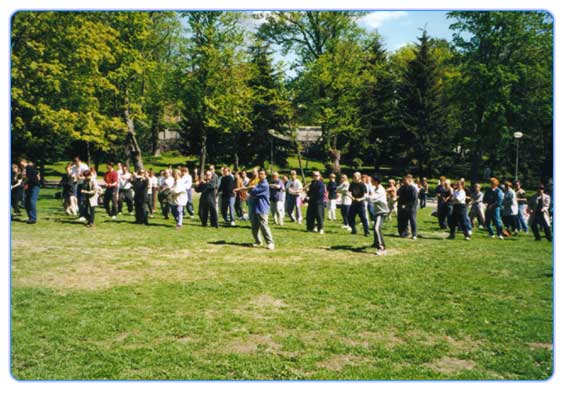
Master Wang Feng-Ming teaching Qi Gong in Finland.
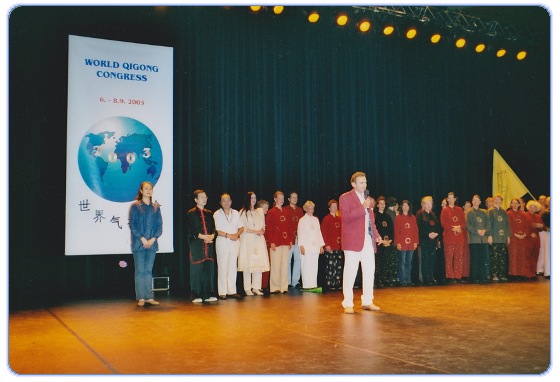
In 2003, Master Wang Fengming was invited to The World Qigong Congress in Germany. He received an "outstanding paper award" for his treatise on taiji stick and ruler qigong.
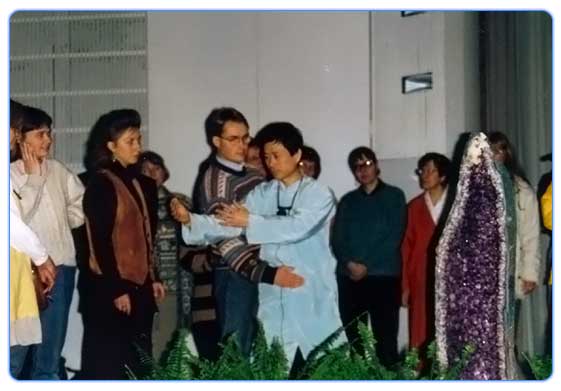
Master Wang Feng-Ming showing his Dantian power after lecture.
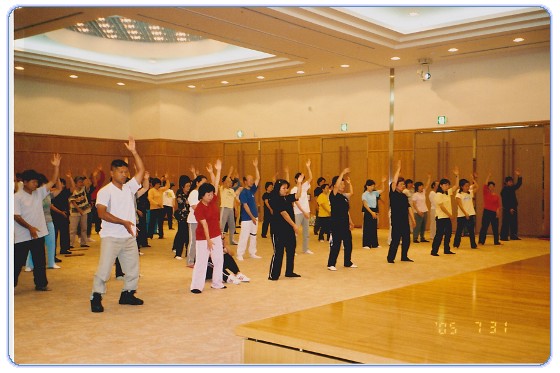
Master Wang Fengming teaching taiji neidangong.
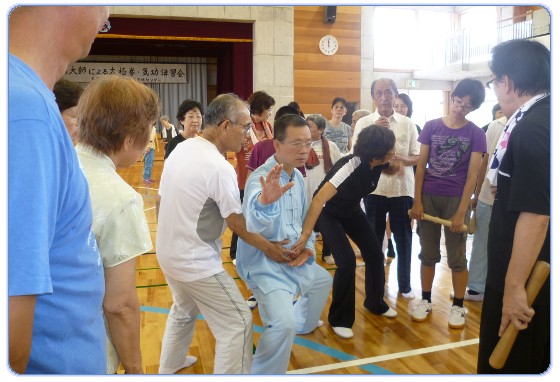
Students feeling Master Wang Fengming's dantian vibration.
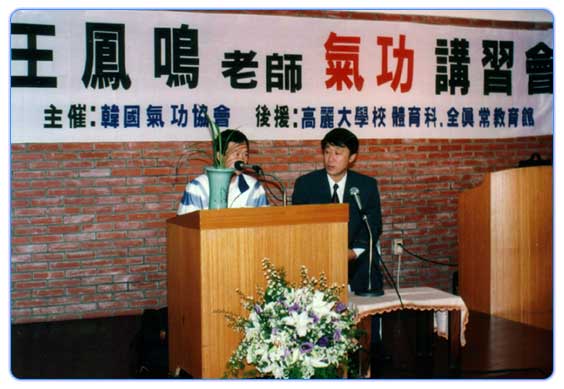
Master Wang Feng-Ming teaching Qi Gong in Gao-Li Univesrity in South Korea.
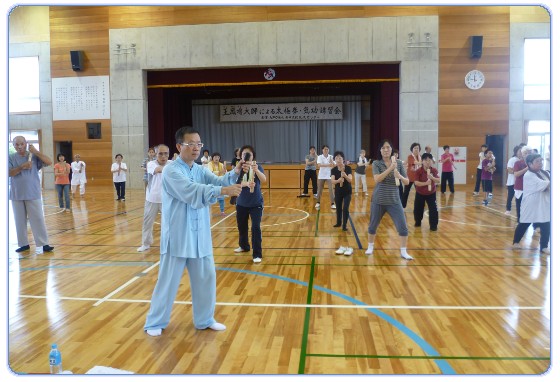
Master Wang Fengming teaching taiji stick and ruler qigong.
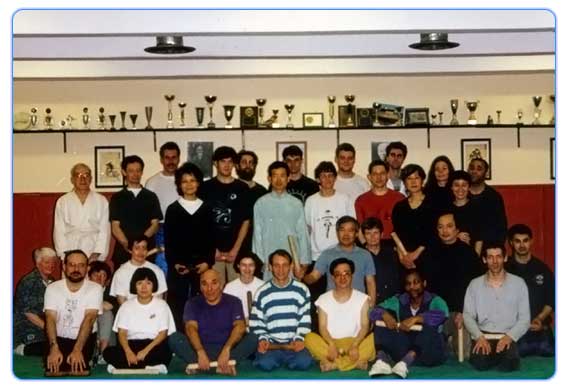
Master Wang Feng-Ming with his Taiji stick students in France.
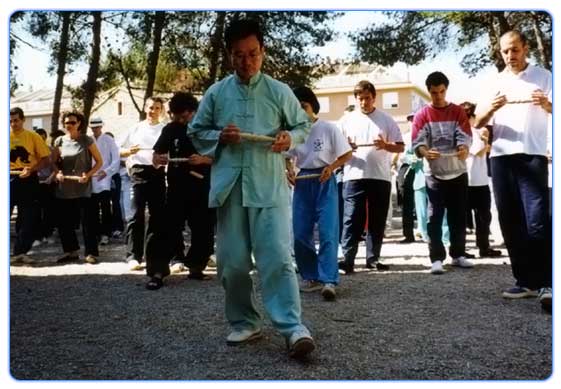
Master Wang Feng-Ming leading Spanish students in Qi Gong practice.
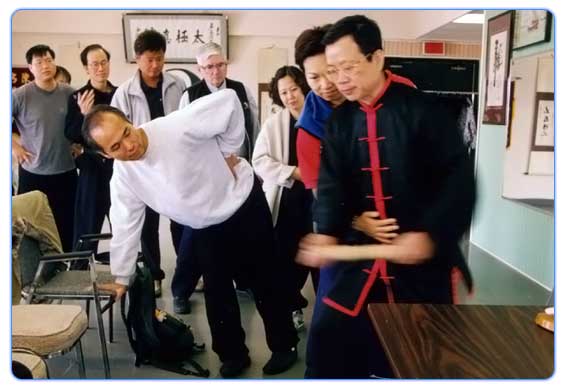
Students testing Master Wang Feng-Ming's "Dantian vibration" in Canada.
